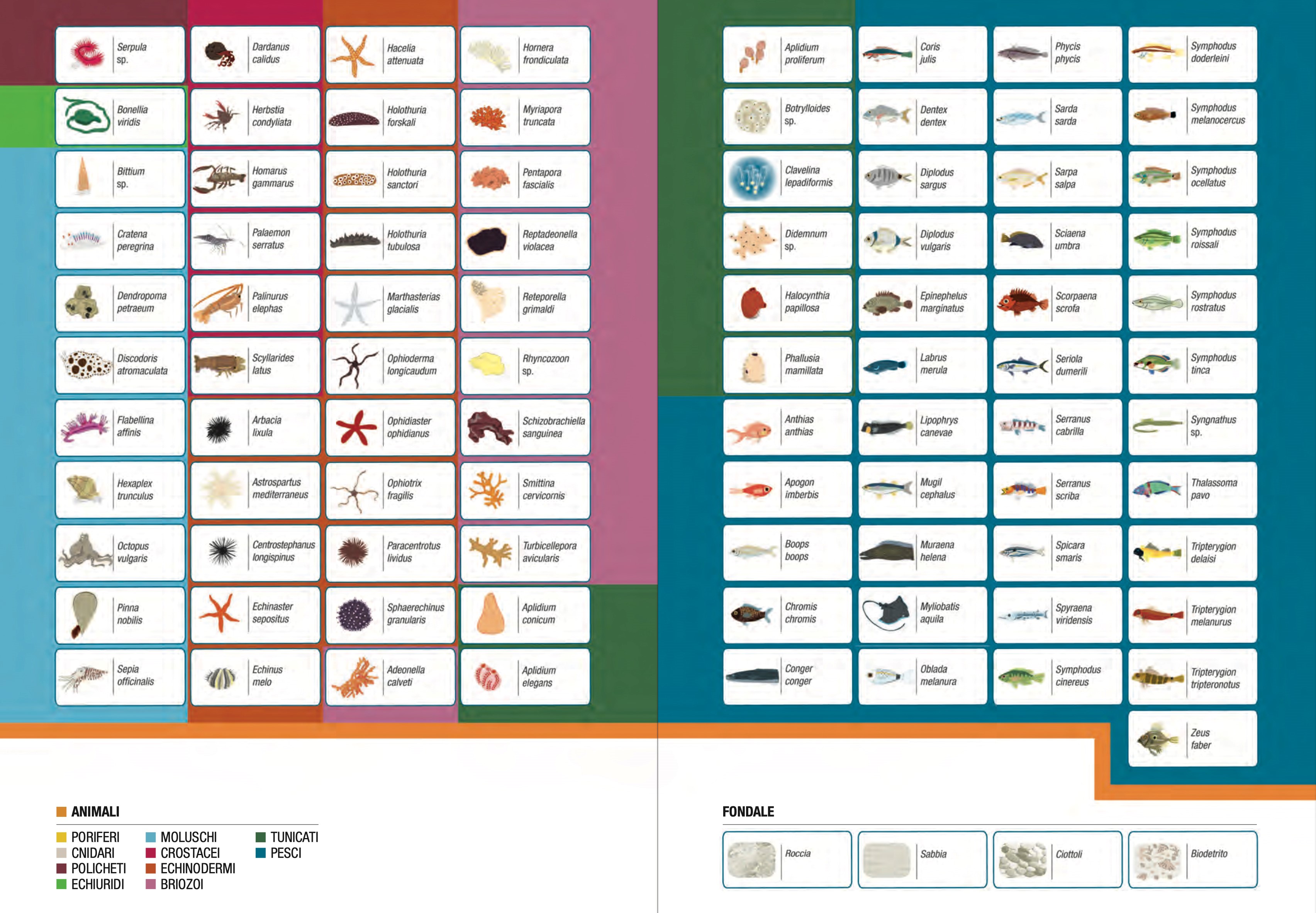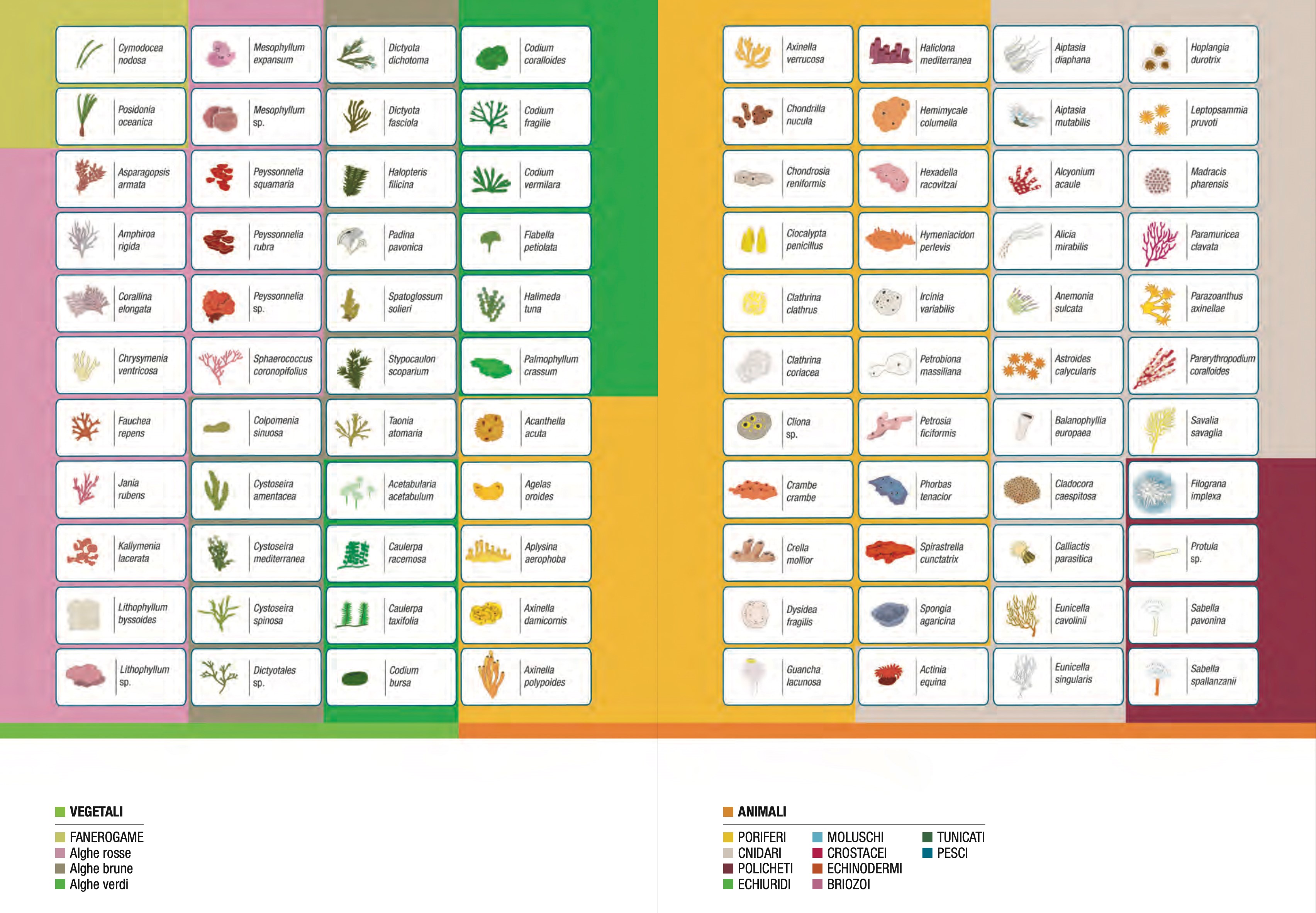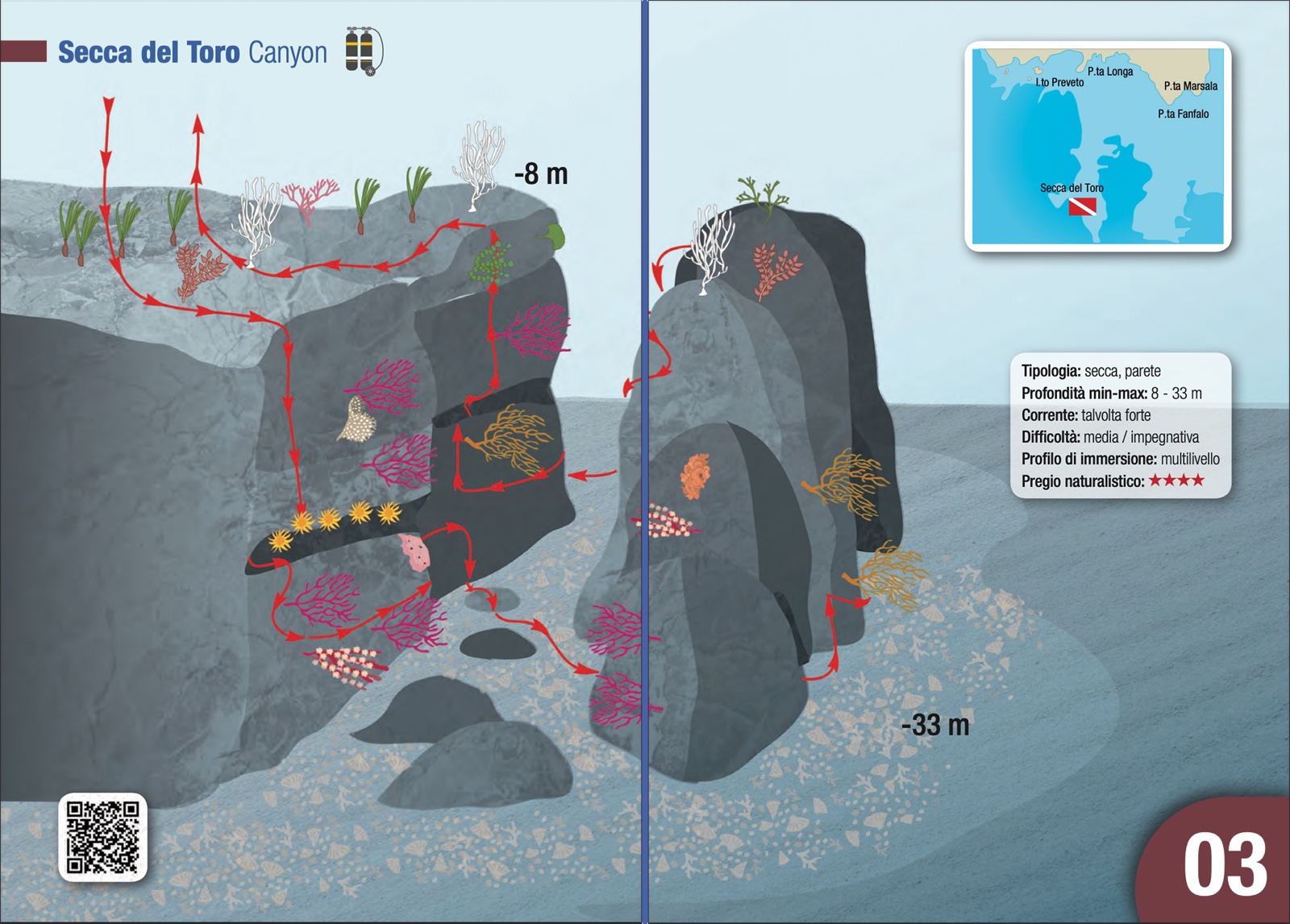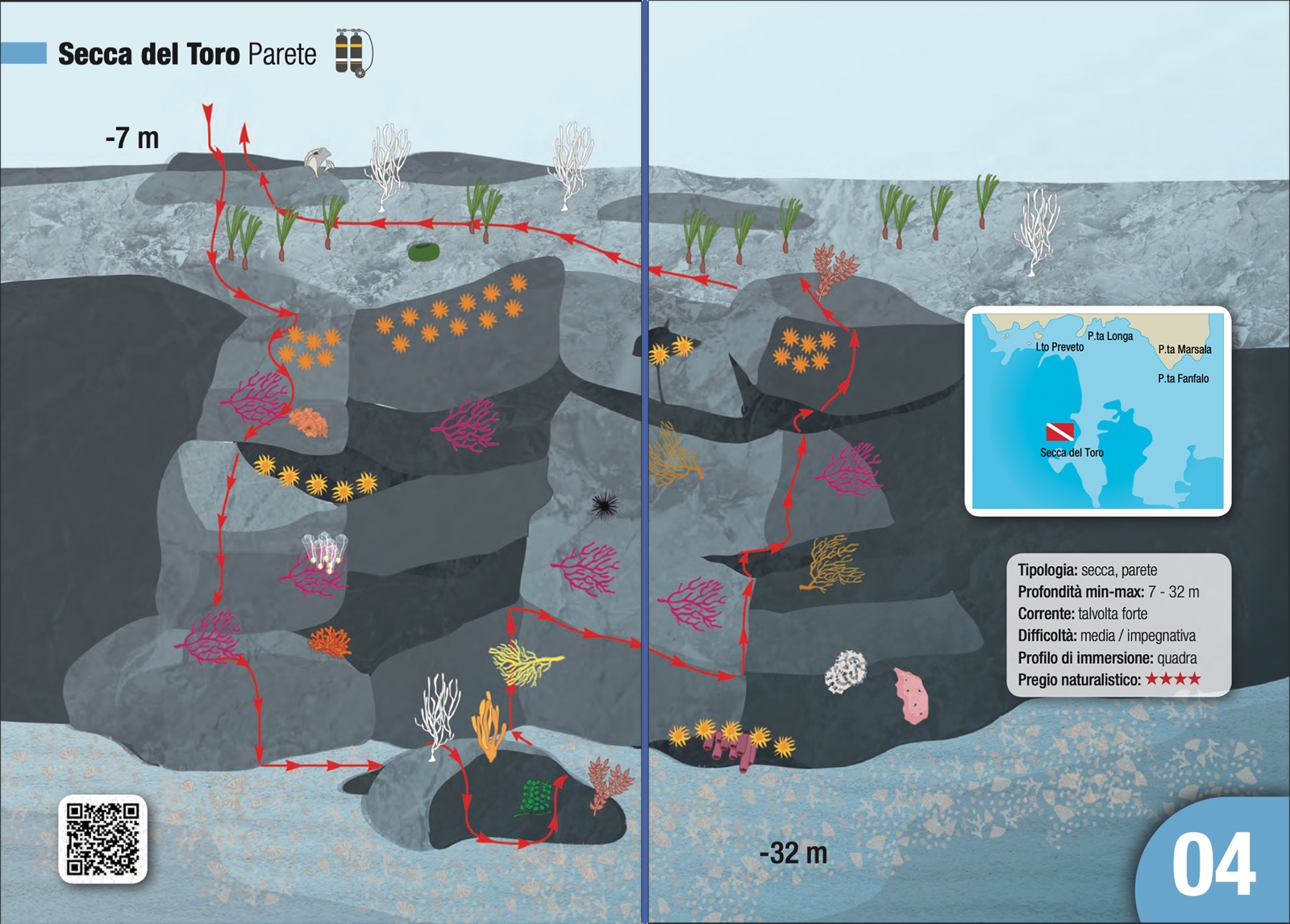Sito 3/4 - Secca del Toro
The shoal offers two different dive sites:
Site 1: The Canyon
The south-west side of the Secca del Toro shoal offers the opportunity to travel through a 'canyon' formed by two spectacular vertical rock walls about 3-4 m apart, and to appreciate a remarkable diversity of species, habitats and landscapes. The top of the shoal, at about 8 m, and the substratum sloping down to about 17 m, are covered with rich algal populations (Dictyotales spp., Asparagopsis armata, Padina pavonica) and large areas colonised by Posidonia oceanica with a rich array of associated flora and fauna. The fish fauna is represented by damselfish (Coris julis) in male and female livery, the moray (Muraena helena), the perch (Serranus cabrilla), the redwing (Symphodus melanocercus) and the peacock wrasse (S. tinca). With a bit of luck, sea eagles (Myliobatis aquila) can also be observed. Both walls of the 'canyon' are adorned with large fans of the red (Paramuricea clavata) and yellow (Eunicella cavolinii) gorgonian. The chromaticism of the encrusting layer is striking, with orange tunicates (Aplidium elegans, A. proliferum, A. conicum), pink encrusting algae, yellow sponges (Agelas oroides, Axinella damicornis), pink (Haliclona mediterranea) and blue (Phorbas tenacior). In the rocky crevices are the lobster (Palinurus elephas), the hedgehog with long spines Centrostephanus longispinus, the snake star (Ophidiaster ophidianus), the star Hacelia attenuata and many invertebrates that carpet the substrate. The route in a south-easterly direction continues into a narrow fissure that leads back to the part facing the open sea, to the south, where the rock walls are rich in red and yellow gorgonia among which swim red mullet kings (Apogon imberbis) and red damselfish (Anthias anthias). The 'canyon' walls emerge from a sandy seabed, at about 33 m, of a biodetritic nature.
Site 2: The Wall
The top of this beautiful shoal is located at 7 m, from where, down to a depth of about 17 m, colourful habitats alternate, especially within the rocky crevices, and flat portions of the substrate with red, green and brown algae populations, areas with Posidonia oceanica, white gorgonians, patches of the sponge nut and specimens of the actinia Anemonia sulcata. Inside the rock crevices the orange madreporaria Astroides calycularis carpets the rock together with encrusting sponges and orange stars. The most common fish are the peacock damsel, the banded seabream and the gilthead seabream. Beyond 18 m, on the north side of the shoal, spectacular vertical and overhanging walls present a wealth of shapes and colours. The large fans about a metre high of the red gorgonian also present colonies in the yellow colour variety. The gorgonians, which also include the yellow gorgonian, are colonised by a rich fauna including the fragile white clusters of the serpulid Filograna implexa and the transparent colonies of the tunicate Clavelina lepadiformis. The presence of the false black coral at about 28 m on the rock face is noteworthy. Particularly rich in benthic species are the crevices and ravines, the vaults of which are carpeted with the yellow madrepores Leptopsammia pruvoti, colourful patches of sponges and colonies of the false coral. At the base of the fissures, yellow sponges and clusters of the orange tunicate Aplidium proliferum stand out. Inside the cracks can be found lobster, mostella and moray eel. The rock face ends at 32 m on a biodetritic bottom on which boulders covered with coralline algae and the alga Caulerpa racemosa rest. White gorgonia and large specimens of the candelabrum sponge stand out on the boulders.
Legenda:


-
Information
-
Contacts

